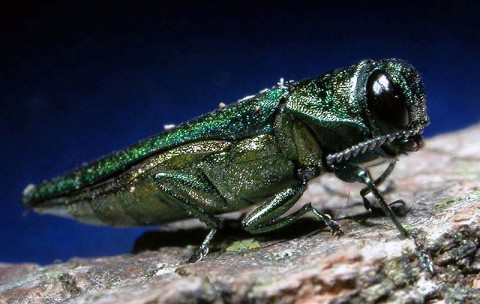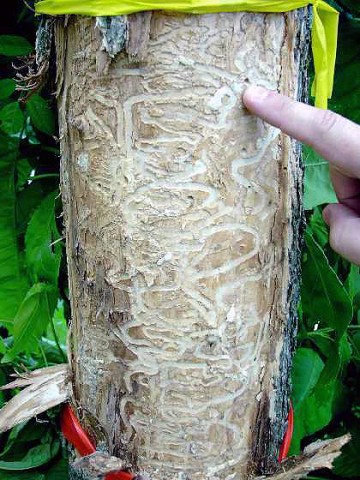TDA Foresters stress importance of Not Moving Firewood to help Slow Spread
 Nashville, TN – Emerald Ash Borer, an invasive insect that destroys ash trees, has recently been found in Smith and Jefferson counties. Smith is the first county in Middle Tennessee where EAB has been found. Both cases have been confirmed by USDA.
Nashville, TN – Emerald Ash Borer, an invasive insect that destroys ash trees, has recently been found in Smith and Jefferson counties. Smith is the first county in Middle Tennessee where EAB has been found. Both cases have been confirmed by USDA.
While Jefferson County is adjacent to previously quarantined areas where EAB has been confirmed, the find in Smith County was of particular concern because of the distance the insect was found from the already quarantined areas in East Tennessee. The location in Smith County where four EAB were caught is at Cordell Hull Lake in the Elmwood/Granville area.

 Jefferson and Smith counties will now be added to the Emerald Ash Borer quarantine. A total of 12 counties have been added to the list this spring and summer including Greene, Campbell, Cocke, Union, Monroe, Anderson, Hamblen, Hancock, Hawkins and Roane. Blount, Claiborne, Grainger, Knox, Loudon and Sevier counties were placed under quarantine last year.
Jefferson and Smith counties will now be added to the Emerald Ash Borer quarantine. A total of 12 counties have been added to the list this spring and summer including Greene, Campbell, Cocke, Union, Monroe, Anderson, Hamblen, Hancock, Hawkins and Roane. Blount, Claiborne, Grainger, Knox, Loudon and Sevier counties were placed under quarantine last year.
The quarantine prohibits the movement of firewood, ash nursery stock, ash timber and other material that can spread EAB. With the new discovery, citizens can expect expanded surveys and should report any symptomatic ash trees to TDA.
“It’s a great time of year to go camping,” said Phelps. “Let’s all do our part to slow the spread of this insect by not moving firewood around while camping or hunting and fishing.”
While it has not been detected in Tennessee yet, the arrival of Asian Long-horned Beetle is feared since it kills more than one species including maples, birches, ash, sycamore, poplar, hackberry and others. It, too, is commonly introduced to new areas by movement of firewood.
TDA urges area residents and visitors to help prevent the spread of EAB and other forest pests:
- Leave firewood at home – don’t transport it to campgrounds or parks.
- Use firewood from local sources near where you’re going to burn it, or purchase firewood that is certified to be free of pests (it will say so on the label included with the packaging).
- If you have moved firewood, burn all of it before leaving your campsite.
- Watch for signs of infestation in your ash trees. If you suspect your ash tree could be infested with EAB, visit www.tn.gov/agriculture/eab for a symptoms checklist and report form or call TDA’s Regulatory Services Division at 1.800.628.2631.
For more information about EAB and other destructive forest pests in Tennessee, visit the new website: www.protecttnforests.org. The site is a multi-agency effort to inform and educate Tennesseans on the harmful impacts insects and diseases have on our trees, where the problem spots are, and what landowners can do to help protect their trees.
Other Emerald Ash Borer Information
Emerald Ash Borer (EAB) attacks only ash trees. It is believed to have been introduced into the Detroit, Michigan area 15 to 20 years ago on wood packing material from Asia.
Typically, the Emerald Ash Borer beetles can kill an ash tree within three years of the initial infestation. Adults are dark green, one-half inch in length and one-eighth inch wide, and fly only from April until September, depending on the climate of the area.
In Tennessee, most EAB adults would fly in May and June. Larvae spend the rest of the year beneath the bark of ash trees. When they emerge as adults, they leave D-shaped holes in the bark about one-eighth inch wide.
The Tennessee Department of Agriculture Division of Forestry estimates that five million urban ash trees in Tennessee are potentially at risk from EAB. The risk represents an estimated value loss of $2 billion. There are an estimated 261 million ash trees on Tennessee public and private timberland potentially valued as high as $9 billion.
For more information about other programs and services of the Tennessee Department of Agriculture visit www.tn.gov/agriculture.


